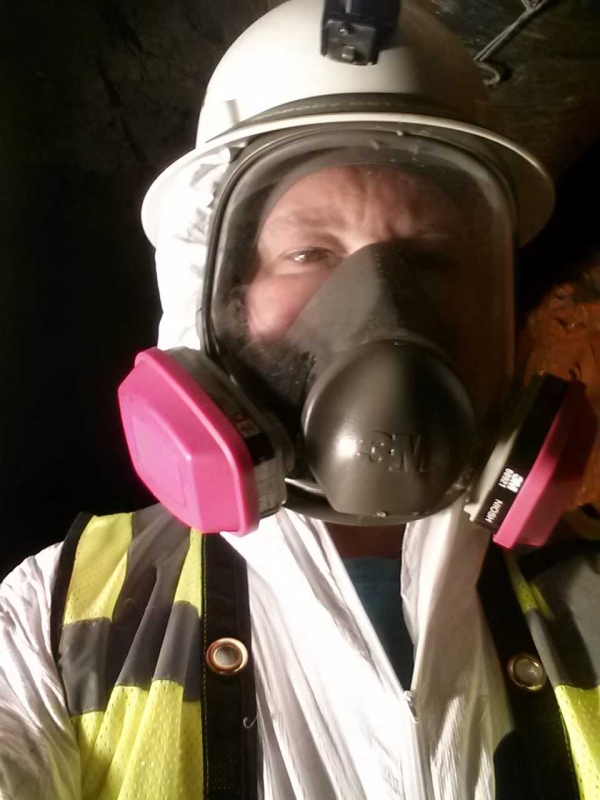You have /5 articles left.
Sign up for a free account or log in.
John Spevacek, an assistant professor of engineering at Wake Technical Community College, remembers the university of 1990. That was the year he got his Ph.D. from the University of Illinois. In response to my piece “Higher Education Change in 35-Year Increments,” John emailed me with his recollections and thoughts. Having enjoyed reading John’s email, I asked if he’d expand on his thinking in a Q&A. He graciously agreed.
Q: You’ve had a long career both within and outside academia. Can you give us a quick sketch of your career from finishing your Ph.D. until now?

A: When I was at Illinois, the chemical engineering department hired Walter May, a man with 30 years of experience at ExxonMobil. He would probably be called a teaching professor nowadays, but back then, it was very unusual. He had countless real-world examples to make all the dry engineering equations come to life. I was fortunate enough to TA a couple of his classes and saw the difference. That made a huge impact on me, and so I decided to follow a similar footpath.
I graduated and worked in industrial R&D with coatings, adhesives and other polymer materials (plastics), although I only worked 25 years before switching to teaching. It was pretty neat to be able to fulfill a lifelong dream. And my stories are way more fun than Dr. May’s. One time in a gold mine in Colorado …
Q: How do you remember the university of 1990 being different from today?
A: Computers were starting to make an entry, but they cost thousands of dollars, so they were limited. There were still dissertations written on typewriters. Technology’s presence in the classroom was similarly limited. Cellphones were still limited to Dick Tracy. I don’t remember what students did when they were bored in class. Doodled? Looked at classmates? Slept?
Online classes (sync or async) didn’t exist. There were video classes, but you needed to show up in the classroom to watch them.
Discussions and disagreements were more civil. I attended a talk by Jeremy Rifkin, an early anti-GMO advocate. He had been invited by the Agriculture School, who obviously had a different opinion. I also attended one by G. Gordon Liddy, one of Nixon’s “plumbers” and a staunch conservative. There were a few hecklers, but he was able to continue with minimal interruptions.
The biggest social issue on campuses was ending apartheid in South Africa, with protests to get schools to divest from South Africa in their endowments.
No one was worried about being saddled with a lifetime of student loans. They weren’t always small sums, but they were manageable.
The syllabus was on paper, as was the grade book, recommended reading list and anything else that is now on the LMS. Videos, especially if there was any quality to them, were extremely expensive and labor-intensive. Now you can shoot them anytime, anywhere, like that one I shot in a Colorado gold mine …
Q: Now that you have looked back three decades into higher education's past, any speculation about where the next 30 years might bring us?
A: I would break this into three categories: 1) the linear projections of current trends, 2) the disruptive predictions and 3) the ultra hyper Black Swan on steroids.
In the first category, technology will continue to drive change, offering students and faculty more flexibility with schedules and locations. Concerns about the cost-benefit of college will only increase, since one side of that ratio won’t be going down.
I would place AI in the second category. It is already changing things quickly, with more changes to come. But we really don’t know the endgame, and anyone who claims otherwise isn’t being honest with themselves. The technology is “self-generative.” No one fully knows themselves, and now they claim to know another?
The third category is the toughest to imagine but the most fun. I would offer up COVID as a past example of this category. No one saw it coming and that it would alter education.
I could imagine some neural–silicon chip interface that would completely alter what learning is (think Neo in the Matrix movie, “I know kung fu”). I could see education getting chased up Bloom’s taxonomy as students instantly acquire data but need to learn how to use it and turn it into knowledge and wisdom.
Or what if the NFL and NBA grew large, popular minor leagues that effectively killed them as revenue sports for D-1 schools (this already exists for baseball). The impact could be far more complicated than we might think.




